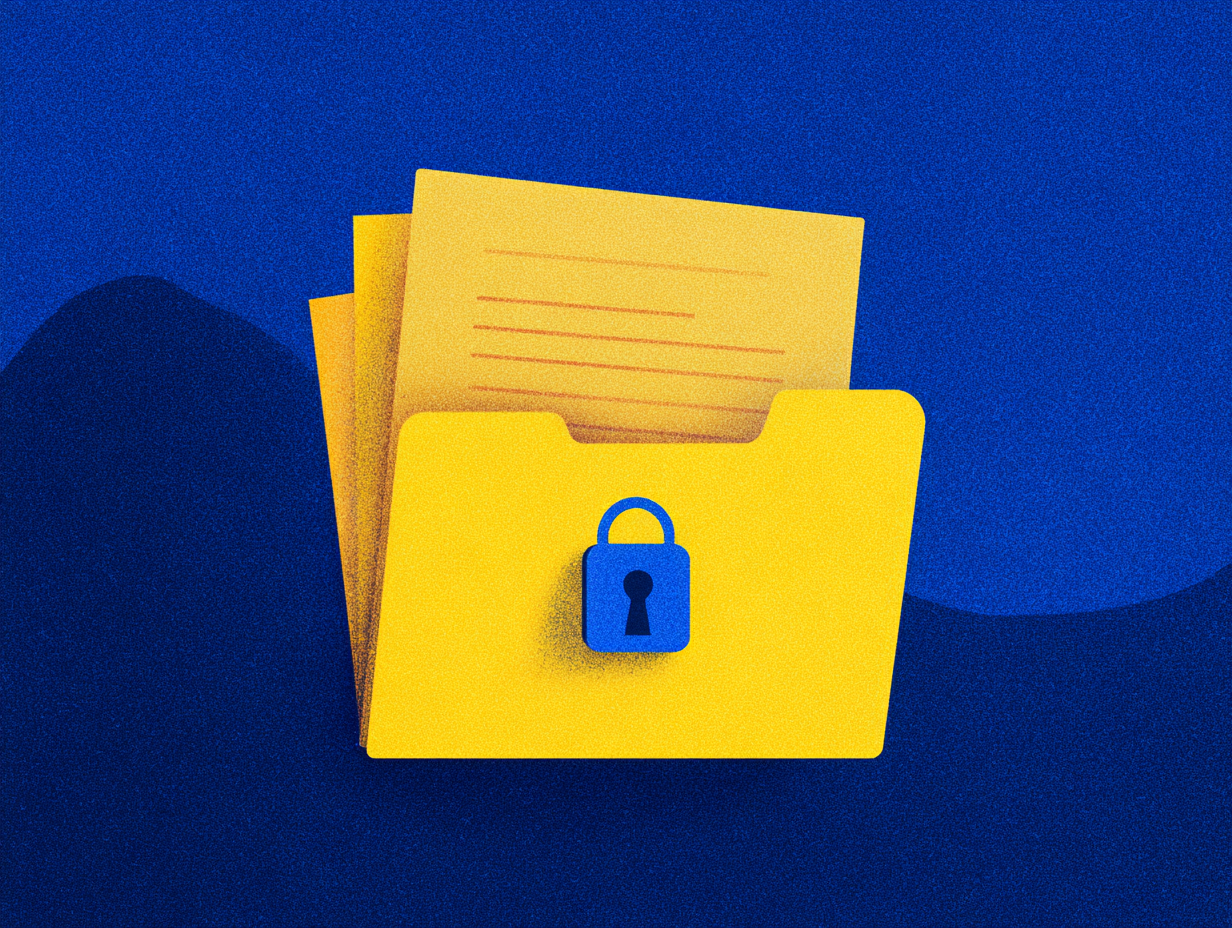
File Sharing’s Trust Problem
If you're reading this, you're likely questioning whether your current file-sharing setup is protecting your sensitive data. You should be concerned. In 2025, even cybersecurity companies like Fortinet—with a 15% share of the global firewall market—fell victim to attackers who compromised customer data stored on their "secure" third-party file sharing service.
The uncomfortable truth is that most organizations discover their file-sharing vulnerabilities only after experiencing a breach. Marcus Chen, IT director at Kellogg's, trusted Cleo's enterprise-grade managed file transfer platform for HR operations until April 4, 2025, when the company disclosed that their employee data had been compromised through that very system.
If you're evaluating file sharing solutions because your current setup feels inadequate, your instincts are correct. The question isn't whether traditional file sharing platforms have security problems—it's whether you can afford to keep using them while attackers systematically exploit their fundamental weaknesses.
The Hidden Vulnerabilities in "Enterprise-Grade" Solutions
When you evaluate file sharing vendors, their marketing materials probably emphasize encryption, compliance certifications, and enterprise features. What they don't highlight are the architectural vulnerabilities that make these systems attractive targets for sophisticated attackers.
Traditional enterprise file sharing services encrypt your data during transmission and storage, but they decrypt it on their servers for processing, collaboration, and administrative functions. This server-side decryption creates critical vulnerability windows where your data exists in readable form, accessible to service employees, government requests, or attackers who compromise the provider's infrastructure.
The Fortinet breach perfectly illustrates this vulnerability. Despite having extensive internal cybersecurity expertise, they couldn't prevent unauthorized access to customer data stored on a third-party file-sharing platform. The attack didn't require breaking encryption algorithms or exploiting zero-day vulnerabilities—it simply leveraged normal system access to exfiltrate sensitive information that existed in decrypted form on the provider's servers.
This fundamental architectural flaw affects virtually every mainstream file-sharing solution. When you upload sensitive documents to these platforms, you're trusting not just the company's security practices, but also their employees, their government compliance obligations, and their ability to prevent system compromises indefinitely.
Real-World Consequences: What Happens When Trust Breaks Down
The Dell breach in 2025 demonstrates how quickly file-sharing compromises can escalate. The World Leaks extortion group published 1.3 terabytes of stolen data, including 416,103 files containing employee information, backup data, software tools, and infrastructure scripts. This followed a 2024 Dell breach that exposed personal data from over 10,000 employees, establishing a pattern of repeated vulnerabilities in their data handling systems.
Consider the Allianz Life incident from July 2025, where social engineering attacks compromised a third-party system, exposing personal data for most of their 1.4 million customers. The customer notification process, credit monitoring services, and regulatory response consumed resources that could have funded comprehensive security upgrades for years.
These aren't isolated incidents affecting careless organizations. Intel 471 has documented 17 vulnerabilities in managed file-transfer products that particularly interest threat actors since 2018, with 51 of 136 total vulnerabilities classified as high risk. The MOVEit supply chain attack affected thousands of downstream organizations, with new victims still being discovered five months after the initial breach.
When Coca-Cola's Middle East division refused a $20 million ransom demand, the Everest ransomware gang published sensitive employee documents including passport scans and visa documents. The breach affected 959 employees directly, but the regulatory investigations, identity protection costs, and reputation damage created consequences that lasted years.
What You Should Actually Look For in a Secure Solution
If you're serious about protecting your data, you need to understand the fundamental differences between traditional file sharing and truly secure alternatives. The features that matter most aren't the ones highlighted in typical marketing materials.
Zero-Knowledge Architecture: The most secure systems employ zero-knowledge encryption, where files remain encrypted even from the service provider. Your encryption keys stay exclusively under your control, eliminating the risk of insider threats, government data requests, or server-side compromises. When service providers can't access your data even if they wanted to, your files remain protected regardless of what happens to their infrastructure.
Immutable Audit Trails: Traditional platforms treat detailed logging as an optional feature. Advanced systems use blockchain technology to create tamper-proof records of every file access, modification, and sharing activity. When the Slack breach occurred through compromised vendor tokens, their existing monitoring systems failed to detect unauthorized access until private code repositories had been stolen. Blockchain audit systems would have created immediate alerts and unquestionable evidence of the unauthorized activities.
Distributed Storage Architecture: Single-cloud storage creates single points of failure that can shut down your operations entirely. Advanced platforms fragment your files across multiple cloud providers, ensuring that infrastructure failures or security incidents at one provider don't compromise your data access or security. This approach also eliminates vendor lock-in and provides geographic redundancy for compliance requirements.
Behavioral Analytics: The exposure of 16 billion login credentials across 30 datasets in 2025 highlighted how credential theft enables systematic attacks across thousands of organizations. Advanced file sharing platforms use AI to establish behavioral baselines for users and detect anomalies that might indicate compromised accounts or insider threats, providing protection even when credentials are stolen.
The Compliance and Insurance Reality
If your organization operates in a regulated industry, your file-sharing choices have direct implications for compliance costs and insurance coverage. GDPR enforcement has intensified significantly, with fines increasing 345% in 2025 compared to 2024. Organizations face penalties not just for direct breaches, but for inadequate due diligence in selecting file-sharing vendors.
The Grubhub breach, which originated from a compromised third-party service provider account, demonstrates how file-sharing vulnerabilities can trigger multiple regulatory frameworks simultaneously. Healthcare organizations face particularly complex challenges, as the Ascension breach in May 2025 affected patient data across multiple states, triggering investigations from numerous regulatory agencies.
Cyber insurance providers are increasingly scrutinizing file-sharing security practices before providing coverage. Organizations using consumer-grade or inadequately secured solutions face premium increases of 50-100%, while some insurers refuse coverage entirely. The detailed audit trails and compliance features that advanced file sharing platforms provide can actually reduce insurance costs while improving coverage terms.
Financial services regulations require comprehensive documentation of every data interaction. Traditional file sharing solutions struggle to provide the detailed, tamper-proof audit trails that regulators expect. Organizations need systems that can instantly provide complete, unquestionable records of data access and modifications.
The Supply Chain Security Challenge
Your file sharing security affects more than just your organization. The interconnected nature of modern business means that compromises can cascade through entire ecosystems of connected organizations. The TeleMessage breach, where hackers compromised a customized Signal app used by US government officials, demonstrated how quickly file sharing vulnerabilities can escalate to national security concerns.
Within 20 minutes, attackers accessed AWS-hosted servers and found plaintext credentials for backend admin panels. The breach revealed names, message fragments, and contact information of government personnel, showing how inadequate file-sharing security can create risks far beyond the original organization.
The Snowflake data breach illustrates this multiplier effect. After hackers exploited compromised login information, they accessed Snowflake clients, including Ticketmaster and AT&T, affecting millions of customers across multiple organizations. When you share files with partners, vendors, or customers, your security practices become part of their attack surface.
Advanced Threat Targeting File Sharing
The evolution of cyber attacks has made file-sharing platforms particularly attractive targets. Unlike traditional network infiltration that requires overcoming multiple security layers, file-sharing platforms often provide direct access to organizations' most sensitive information with minimal technical barriers.
As Forrester analyst Jess Burn explains, these systems contain a "treasure trove" that goes beyond individual credentials to include high-value data perfect for extortion or corporate espionage. The automated nature of modern attacks means that even small security weaknesses get exploited at scale, affecting organizations that might never have been individually targeted.
The Pegasus Airlines incident reveals how employee errors can expose massive amounts of sensitive data. A system administrator's misconfiguration left 23 million files containing flight data, crew information, and software source code accessible online without password protection. The exposed 6.5 terabytes of data could have affected thousands of passengers and flight crew if discovered by malicious actors.
This highlights why secure file sharing requires more than just preventing external attacks. You need systems that protect against human error, insider threats, and sophisticated social engineering campaigns that convince employees to bypass security controls.
Making the Right Choice for Your Organization
When evaluating secure file sharing solutions, focus on outcomes rather than features. How quickly can the system achieve compliance readiness for your specific industry? What measurable reduction in security risks can you expect? How will the solution handle the scale and complexity of your actual usage patterns?
Calculate your true risk exposure by considering direct breach costs, regulatory penalties, business disruption, reputation damage, insurance premium increases, and lost business opportunities from failed vendor qualifications. Most organizations underestimate these cumulative costs by focusing only on immediate technical expenses.
The implementation timeline deserves particular attention. Organizations that delay security upgrades face an average of $847,000 annually in preventable security incidents. Create realistic schedules with clear milestones to maintain momentum and demonstrate progress to stakeholders.
Consider pilot programs that test solutions with real usage patterns before full deployment. The most secure system fails if your team won't use it consistently. Look for solutions that make security transparent to end users while providing enterprise-grade protection.
The Investment That Pays for Itself
Advanced file sharing security isn't just about preventing breaches—it's about enabling business opportunities that would otherwise carry unacceptable risks. Organizations with confidence in their data protection capabilities can pursue new markets, form strategic partnerships, and adopt emerging technologies that create competitive advantages.
B2B customers now routinely require vendor security certifications before signing contracts. Organizations without proper data handling procedures lose an average of 23% of potential deals during vendor qualification processes. Superior security capabilities often command premium pricing and preferred vendor status.
The operational efficiency gains compound over time. Automated compliance reporting reduces preparation costs by up to 80% while improving accuracy. Streamlined access controls eliminate manual processes that traditionally consume significant IT resources. Comprehensive audit capabilities enable proactive risk management rather than reactive crisis response.
Taking Action: Your Security Evaluation Framework
The evidence from 2025's major breaches points to an uncomfortable conclusion: the file-sharing tools that most organizations rely on are systematically failing to protect against modern threats. From cybersecurity companies like Fortinet to major corporations like Kellogg, Dell, and Coca-Cola, the pattern of breaches through trusted file-sharing platforms represents a fundamental shift in the threat landscape.
Start by conducting a comprehensive assessment of your current file-sharing practices, including shadow IT that operates outside official policies. Anonymous surveys typically reveal that employees use an average of twelve different file-sharing services, many unknown to IT departments.
Evaluate solutions based on their ability to address your specific risk profile. If you handle regulated data, prioritize zero-knowledge architecture and blockchain audit capabilities. If you collaborate extensively with external partners, focus on granular access controls and behavioral analytics. If you operate globally, ensure the solution can handle data residency requirements across multiple jurisdictions.
The file-sharing decisions you make today will determine whether your organization becomes another cautionary tale or a model of resilient security practices. The technology exists to protect your data properly—the question is whether you'll implement it before attackers exploit the vulnerabilities in your current system.
Your data security directly impacts your business future. Choose accordingly, because the cost of getting it wrong has never been higher, and the benefits of getting it right have never been more valuable.
Stop trusting “secure” platforms with your most sensitive data.
You no longer have to trust others for your data security. With TransferChain, complete control of your data is entirely in your hands.
Frequently Asked Questions (FAQs)
Why are traditional file-sharing platforms considered insecure in 2025?
Most traditional platforms decrypt files on their servers for processing and collaboration. This creates vulnerability windows where sensitive data can be accessed by employees, government requests, or attackers who compromise the provider’s infrastructure. Major breaches at companies like Fortinet and Kellogg’s in 2025 highlight these weaknesses.
What are the biggest risks of using “enterprise-grade” traditional file-sharing services?
Even “enterprise-grade” solutions often suffer from:
- Server-side decryption exposing files in readable form
- Single points of failure in cloud storage
- Limited audit trails that hinder compliance
- Susceptibility to social engineering and insider threats
These weaknesses have led to large-scale breaches at Dell, Allianz Life, and Coca-Cola.
What is zero-knowledge encryption and why does it matter?
Zero-knowledge encryption ensures that files remain encrypted even from the service provider. Only you own and control the encryption keys, which means; providers, insiders, or attackers cannot access your data—even if the infrastructure is compromised.


